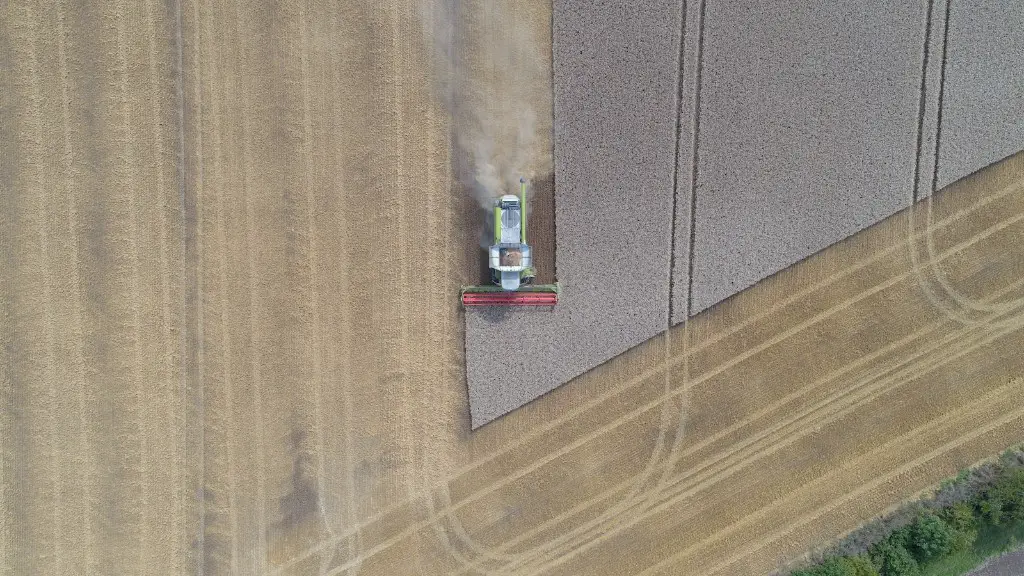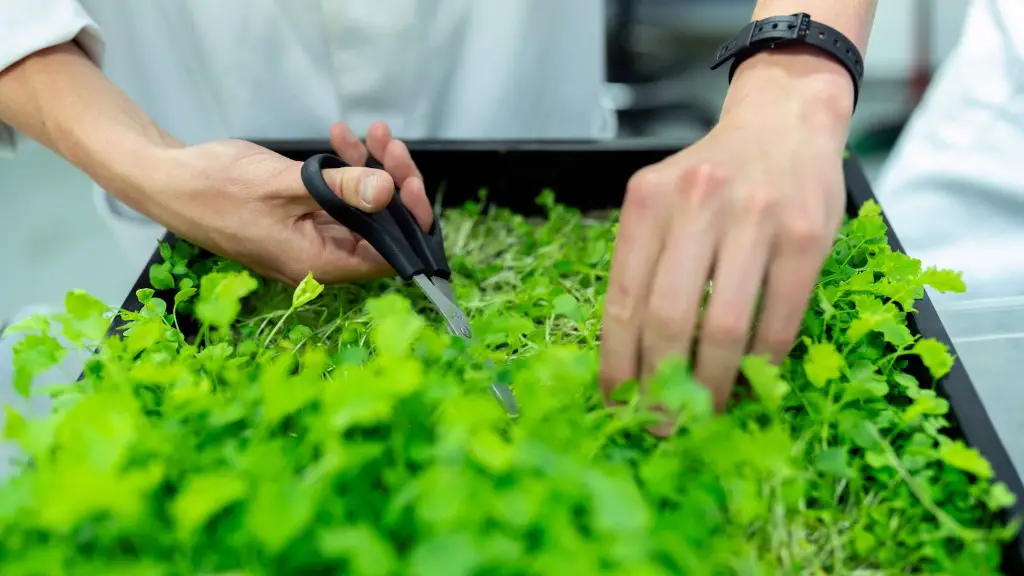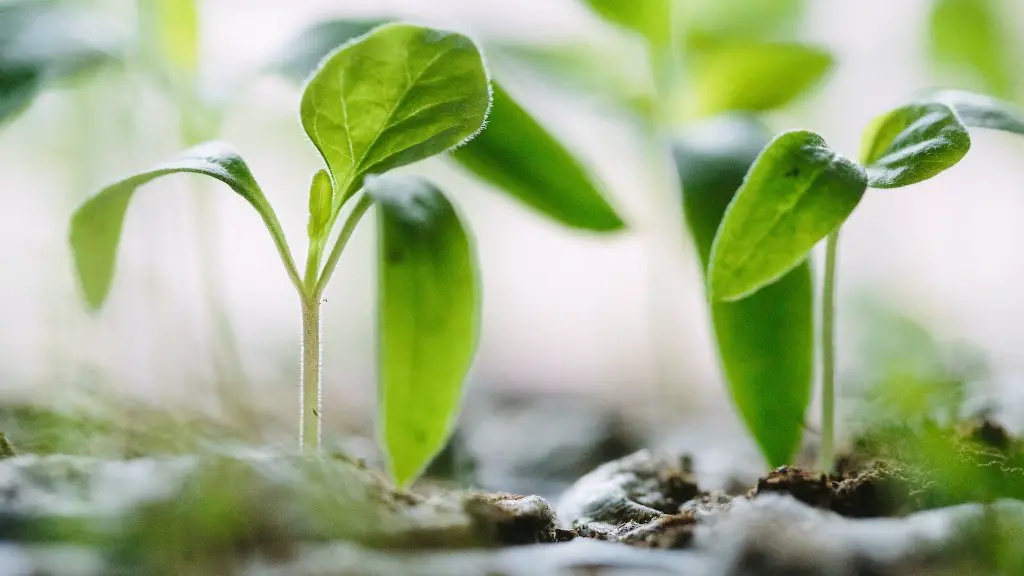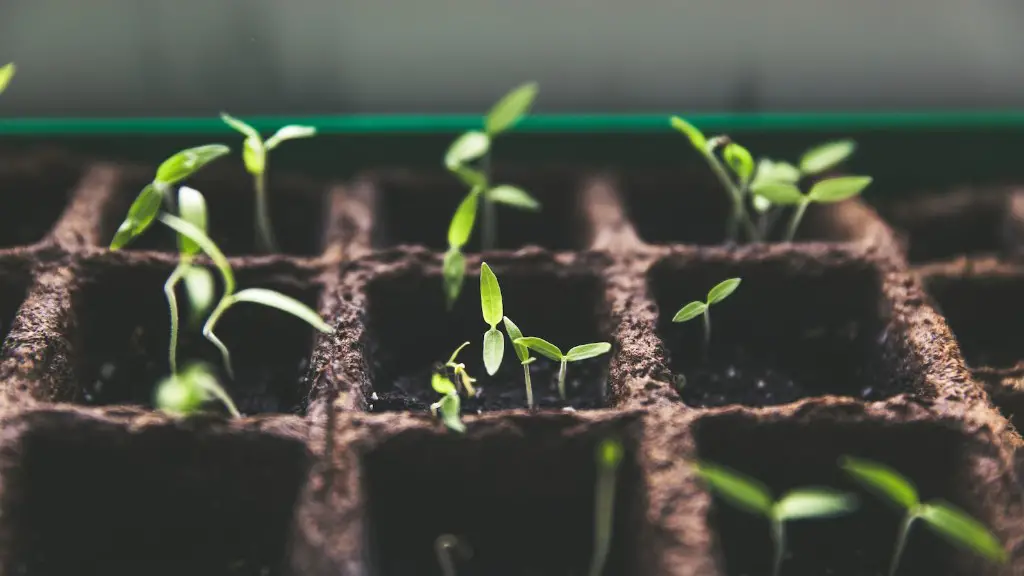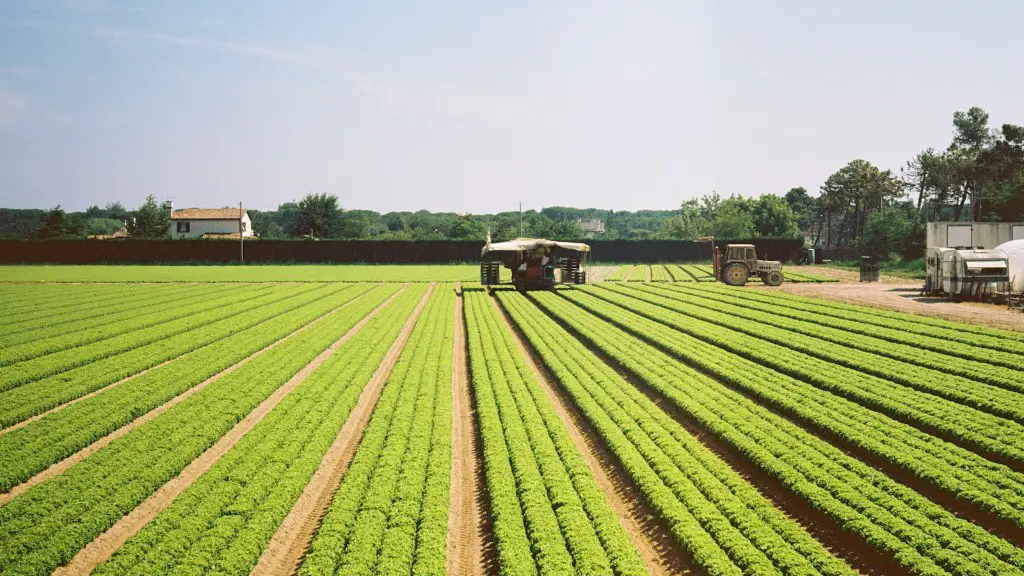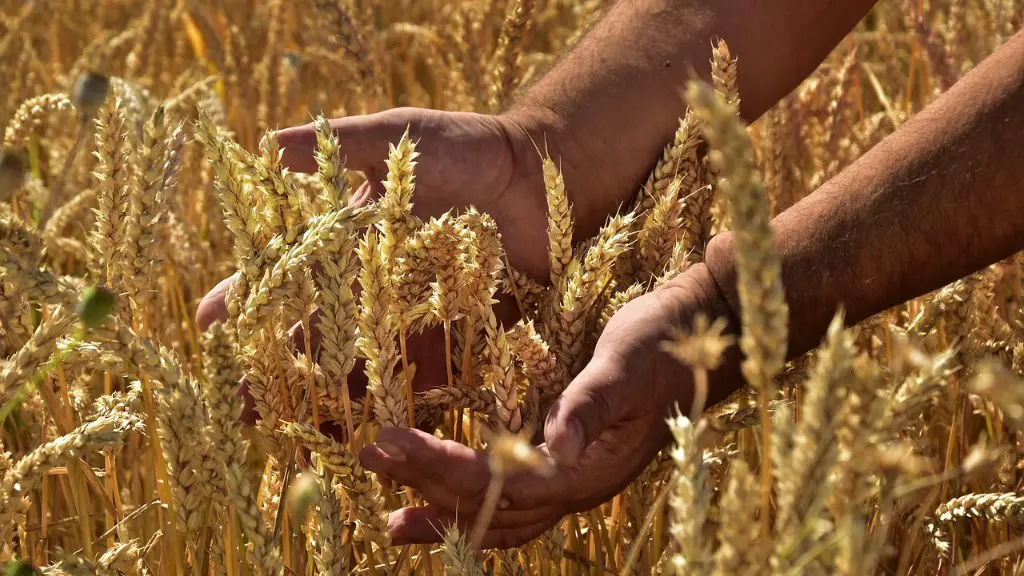Seed bed preparation is a process in agriculture that prepares the soil for sowing seeds for better crop production. To do so, it involves various steps including tilling, soil leveling, soil testing, soil amendment, and cultivating in a correct way. The farmer must take proper care to ensure the ground is fertile, properly nourished and weed-free before sowing the seeds.
Tilling is one of the basic steps of seed bed preparation to help prepare the soil for sowing seeds. It involves the use of machinery to break up soil and mix compost, fertilizer, and other material with it. This helps loosen compacted soil, rid the soil of weeds, and create an ideal environment for planting. The effectiveness of tilling depends on the nature of the soil and the depth of the tillage.
Soil leveling is required to create a flat surface on which to sow the seed. This is typically done with the use of heavy equipment such as a motor cultivator or a harrow. Leveling helps ensure that the seed is planted in an even environment and is also helpful in managing moisture and stopping erosion.
Soil testing is also an important step in seed bed preparation to ensure that the nutrients in the soil are in the right proportions. As different crops have different nutrient requirements, soil testing is used to determine which nutrient levels the soil should contain. It also helps to identify potential problem areas like acidic pH or excessive moisture.
Soil amendment is an important part of seed bed preparation. It involves adding beneficial materials to the soil like organic matter, fertilizer, compost, or other materials. It helps improve the physical and chemical properties of the soil and also has a positive effect on the growth of plants.
Cultivating is the last step of seed bed preparation. It helps to break up and loosen the soil to make it easier for the young seed to take root. It also gets rid of unwanted weeds and helps improve the fertility of the land. It is usually done with the use of a tractor or other agricultural machinery.
In conclusion, proper seed bed preparation is essential for good crop production. It involves various steps like tilling, soil leveling, soil testing, soil amendment, and cultivating. Each step is necessary and should be done in the right way to ensure the best results.
Soil Amendment
Soil amendment is an important part of seed bed preparation and involves adding beneficial materials to the soil like organic matter, fertilizers, compost, or other materials. It helps improve the physical and chemical properties of the soil and also has a positive effect on the growth of plants. By amending the soil, farmers can increase the organic and nutrient content which helps to maximize crop yields.
Organic matter is especially important in soil amendment as it is one of the main sources of nutrients in the soil. Organic matter increases soil porosity, which in turn helps with water retention and drainage. It also helps to improve the soil structure and reduce compaction. Adding organic matter also increases microbial activity and helps to reduce soil erosion.
Fertilizers are another important type of soil amendment, especially for crops with high nutrient requirements. Fertilizers can help ensure that the soil contains the right amounts of nitrogen, potassium, and phosphorous to promote healthy growth. Additionally, some fertilizers can also act as pesticides to reduce the number of pests and diseases in the soil.
Compost is also an important soil amendment and is often used in combination with other materials. It helps to improve soil structure, maintain nutrient levels, and increase water holding capacity. Compost can also help to reduce the spread of diseases and increase the availability of minerals and other nutrients in the soil.
In conclusion, soil amendment is an important step in seed bed preparation as it helps to improve the soil’s physical and chemical properties and promote crop growth. Organic matter, fertilizers, and compost are essential for providing the necessary nutrients and improving soil structure, which in turn can lead to improved crop production.
Tilling
Tilling is one of the primary steps in seed bed preparation and it involves the use of machinery to break up soil. It helps to loosen compacted soil, rid the soil of weeds, and create an ideal environment for planting. It also helps to improve aeration and water infiltration, while encouraging microbial activity and aiding in the absorption of water and nutrients.
Tilling is done with the use of tractors and other agricultural machinery. It can be done manually, but this is not always practical due to time constraints. Tilling can also be done with the use of a motor cultivator or a harrow, which is more efficient and helps ensure that the soil is evenly tilled.
When tilling the soil, it is important to keep in mind the crop that is being grown and the specific requirements of that crop. The tillage should be adjusted accordingly to ensure that the soil is of correct depth and the correct layers are exposed. For example, for deep-rooted plants, tilling should be done to a greater depth compared to crops with shallow roots.
In addition to preparing the soil for sowing seeds, tilling is also beneficial in promoting decomposition. It helps to incorporate organic matter, manure, and other materials with the soil, which improves soil fertility and promotes microbial activity. This in turn helps to improve water absorption and nutrient uptake by plants.
In conclusion, tilling is a crucial step in seed bed preparation and helps to create an optimal environment for crop growth. It helps to loosen compacted soil, break up clumps of dirt, and incorporate beneficial materials with the soil. It also helps to improve aeration and water infiltration and reduce the spread of disease.
Soil Testing
Soil testing is another important step in seed bed preparation and is used to determine which nutrient levels the soil should contain for a specific crop. It helps to identify potential problem areas like acidic pH or excessive moisture and enables farmers to adjust their fertilization regime accordingly.
Soil testing can be done in several ways, such as by manually collecting soil samples and sending them to an accredited laboratory for analysis or by using electronic soil testers. Manual sampling is more labour intensive, but it can be more accurate due to more rigorous testing procedures. Electronic testers are more convenient to use, however they may not be as accurate.
When testing the soil, it is important to be aware of the type of soil and the crop being grown and to adjust the test accordingly. For example, soil tests may need to be adjusted for sandy and clay soils, as different soil types have different nutrient requirements. Additionally, testing may need to be done more frequently for certain crops, such as crops with rapid growth.
Soil testing is also important for identifying nutrient deficiencies or excesses. This helps to determine if the soil needs to be amended with additional materials such as fertilizer or organic matter. Additionally, soil testing can also help to determine which type of fertilizer will be most suitable for a particular crop.
In conclusion, soil testing is an essential step in seed bed preparation and it helps to ensure that the soil contains the right nutrients for a particular crop. It helps to identify potential problem areas, such as acidic pH or excessive moisture, and enables farmers to adjust their fertilization regime accordingly.
Soil Leveling
Soil leveling is an important step in seed bed preparation and it involves creating a flat surface on which to sow the seed. This is typically done with the use of heavy equipment such as a motor cultivator or a harrow. It helps to ensure that the seed is planted in an even environment and it also helps to manage moisture and stop erosion.
Soil leveling can be done in several ways. One way is to use a motor cultivator, which is a machine commonly used in horticulture and agriculture. A motor cultivator is able to break the soil up into smaller clumps and level it out. It is usually used in larger fields and can be used to create contours for drainage.
Another option is to use a harrow, which is a tools that is dragged across the soil to break up the ground and create a level surface. Harrows can be used to break up clumps of dirt or to level out small areas. Additionally, harrows can also be used to create ridges and furrows to help with drainage and irrigation.
In addition to motor cultivators and harrows, there are also other tools that can be used for soil leveling. For example, laser-guided graders are becoming increasingly popular as they are more precise and can produce more uniform results. Additionally, GPS control systems are also available which can be used to precisely control the movement of the graders.
In conclusion, soil leveling is an important step in seed bed preparation and it helps to ensure that the seed is planted in an even environment and is free from weeds and pests. Motor cultivators, harrows, laser-guided graders, and GPS control systems are all commonly used for soil leveling and each has its own advantages and disadvantages.
Cultivating
Cultivating is the last step of seed bed preparation and it helps to prepare the soil for sowing seeds. It involves breaking up and loosening the soil which makes it easier for the young seed to take root. It also gets rid of unwanted weeds and helps to improve the fertility of the land.
Cultivating is typically done with the use of tractors or other agricultural machinery. The machines are able to plough, harrow, and disc the ground which helps to break up the soil and make it easier to work with. Cultivating also helps to aerate the soil, while at the same time mixing in beneficial materials such as compost, manure, or other organic matter.
When cultivating the soil, it is important to be aware of the crop being grown and the specific requirements of that crop. For example, for deep-rooted plants, cultivating should be done to a greater depth compared to crops with shallow roots. Additionally, cultivating should also be done to a greater depth in clay soils compared to sandy soils.
In addition to helping to prepare the soil for sowing, cultivating also has other benefits. It helps to break up dense clumps of soil, while at the same time incorporating beneficial materials with the soil. Additionally, cultivating can also help to reduce the number of weeds and pests in the soil.
In conclusion, cultivating is an important step in seed bed preparation and it helps to prepare the soil for sowing and encourages good germination. It helps to break up dense clumps of soil and mix in beneficial materials with the soil, while also helping to reduce the number of weeds and pests in the soil.
